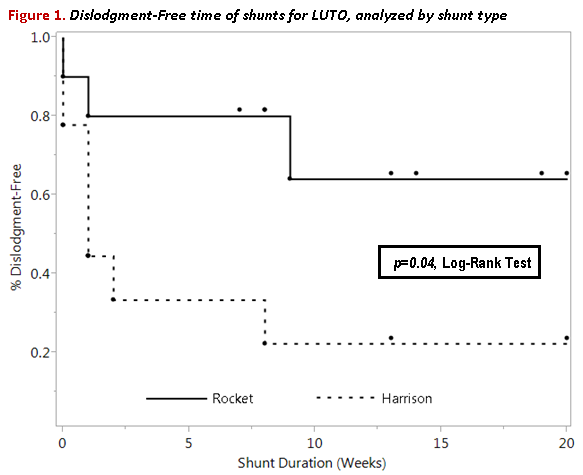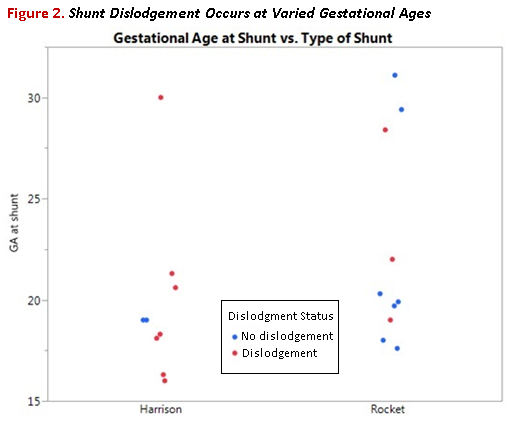Factors Associated with Fetal Shunt Dislodgement in Lower Urinary Tract Obstruction
Michael P. Kurtz, MD, MPH1, Chester J. Koh, MD2, Haleh Sangi-Haghpeykar, PhD2, Alireza A. Shamshirsaz, MD2, Jimmy Espinoza, MD2, Darrell L. Cass, MD2, Oluyinka 0. Olutoye, MD2, Olutoyin A. Olutoye, MD2, Michael C. Braun, MD2, David R. Roth, MD2, Michael A. Belfort, MD, PhD2, Rodrigo Ruano, MD, PhD2.
1Boston Children's Hospital, Boston, MA, USA, 2Texas Children's Hospital, Houston, TX, USA.
BACKGROUND: Fetal lower urinary tract obstruction (LUTO) is a rare but severe condition; up to 45% of fetuses may not survive beyond the neonatal period. Placement of a shunt in utero allows fetal urine to bypass the obstruction, potentially restoring amniotic fluid volume. Device dislodgement is the most common complication of the procedure; in reports comprising more than 10 procedures, the rate of dislodgement ranges from 4-53%. Only two commercially available shunts are commonly used, and their properties differ in the number of coils, diameter of the lumen, and delivery technique. We wished to identify factors associated with fetal shunt dislodgement in lower urinary tract obstruction (LUTO), including shunt type.
METHODS: We conducted a retrospective study of 42 consecutive fetuses with a diagnosis of LUTO in a tertiary fetal center between April 2013 and November 2015. Possible factors associated with prenatal shunt dislodgment were evaluated in fetuses who underwent shunt placement, including gestational age at diagnosis, gestational age at procedure, presence of ‘keyhole sign’, initial fetal bladder volume and wall thickness, prenatal ultrasonographic renal characteristics, amniotic fluid volume, presence of ascites prior to shunting, and type of fetal shunt.
RESULTS: Nineteen (46.3%) fetuses underwent shunt placement at a median gestational age of 19 weeks (range: 16.3-31.1) weeks. Shunt dislodgement occurred in 10 (52.6%) patients. A total of 35 procedures were performed; among which 16 (45.7%) were repeat procedures. The only prenatal factor associated with shunt dislodgement was the type of the shunt; Kaplan-Meier analysis (Figure 1) indicated that the Rocket was associated with increased likelihood of remaining orthotopic (p=0.04, Log-Rank test). Dislodgement occurred at a wide range of gestational ages, as shown in Figure 2.
CONCLUSIONS: Fetal shunt dislodgement occurs in approximately half of the patients and appears to be associated with the type of the shunt. Future research is necessary to develop better shunt systems and to investigate different fetal therapeutic approaches. 

Back to 2016 Fall Congress
